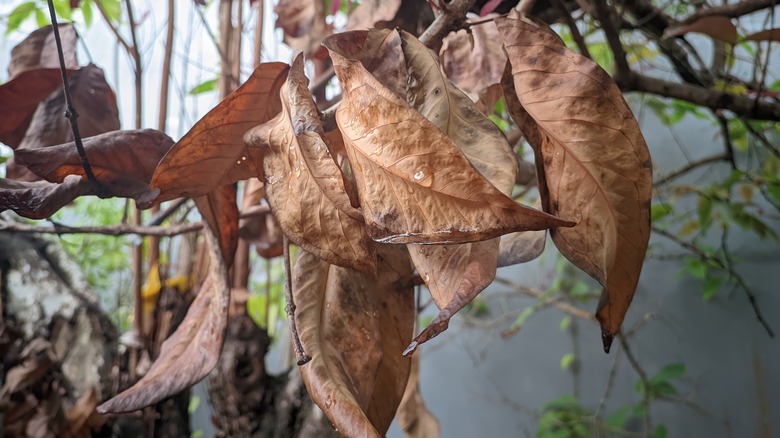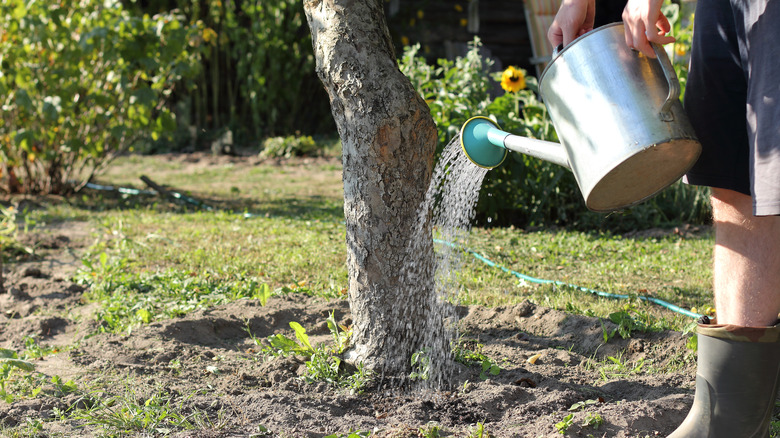Garden Trees, Shrubs & Vines
Ezekiel Maina
Few things beat the aesthetic boost and tranquil ambiance trees lend to your yard. Picture a serene shade on a searing day, alluring bird songs, better air quality, the ever-pleasing rustling sound of leaves, and a slice of Mother Nature’s artistry fitted within your confine. However, this wonderland can quickly transform into a source of vexation when summer temperatures start shooting up the scale. So, how hot is too hot for trees in your yard? For these green friends, the concept of ideal temperature can be tricky as it largely hinges on species-specific preferences. Consider a palm, for instance, which luxuriates at 60 to 80 degrees Fahrenheit. On the other hand, the honey locust tree, in its versatile glory, withstands a broader spectrum of 41 to 95 degrees Fahrenheit.
Extreme temperatures can evoke diverse physiological reactions in your garden’s majestic, leaf-laden habitats, an intriguing tapestry of science and survival that we will unravel later. But generally, leaves wilting or dropping prematurely and stunted growth can be whispers of a tree fighting for survival. Of course, one can’t help but wonder: can trees recover from heat stress? Well, trees under the brunt of scorching temperatures haven’t necessarily been dealt its final blow. A well-thought-out tree heat stress recovery plan complemented with the healing balm of time can see those afflicted green warriors rebound to their former radiant selves.
How does extreme heat affect trees?

Yng Pictures/Getty Images
Trees cool themselves through transpiration, using tiny openings in leaves called stomata. Once water is absorbed by the roots, it travels up through the tree and evaporates through the stomata, dissipating heat. But as the temperature shoots up, the heat exchange in trees faces an unprecedented dilemma. The high temperatures escalate the transpiration rate, putting the trees at risk of losing water faster than they can take it up. Trees close their stomata to counterbalance the situation, sacrificing their cooling mechanism for much-needed water conservation. But there’s a catch. Stomatal closure doesn’t just deprive plants of their cooling system. It also puts your leafy companion’s “kitchen” out of commission. With less carbon dioxide entering the leaves, food production via photosynthesis slows down — quite a double blow for your trees.
To top it all, heat stress increases susceptibility to pests and diseases. A weak plant with a lowered immune response is an easy target for pests and pathogens, leading to further woes during the scorching summer months. So, how can you spot heat stress in your trees? Look for signs like leaf wilting and shedding (these signal desperate pleas for water), leaves turning yellow due to compromised photosynthesis, or trees exhibiting general telltales of stunted growth. Sometimes, the summer sun’s oppressive rays leave those once-lush leaves scorched, with a crisp, brown appearance.
How to help trees in extreme summer heat

Baza178/Getty Images
Consider yourself an arboreal superhero on a mission to rejuvenate your leafy companions from the trials of extreme summer heat. Kick off the intervention with proper hydration. Watering your trees is a bit of an art, and it starts with timing. The ideal period is early morning or late evening when the sun’s rays are less intense and the evaporation rate is low, thus maximizing water absorption. But don’t just sprinkle; give it a slow, deep watering, letting the moisture reach deep into the roots without causing waterlogging. Young trees, like human toddlers, require extra care; thus, a few additional drops of H2O can go a long way in helping them establish a firm footing. Remember, overwatering, just like underwatering, paints a fatal end.
Next, let’s switch gears to mulching; it’s your tree’s guardian armor against the heat, mirroring the forest floor’s cool, damp, nutrient-rich environment within your garden’s confines. It’s also your hero in smothering weeds that could otherwise contend for your tree’s water and nutritional supply. Apply a blanket of 2 to 3 inches of mulch at the tree’s base (and a few inches away from the trunk to sidestep fungal surprises). If you’re thinking of planting new trees in your backyard, how about you consider heat-tolerant species like ash, cedar, catalpa, hackberry, juniper, and pine? These heroes don’t just decorate your backyard but also exhibit a stellar performance under scorching high temperatures.



